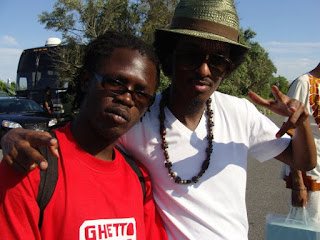With many artistes going commercial in their music, another breed decided to remain 'underground' and stay true to the hiphop game. The emergence of this lot was propelled in 2006 by the famous WaPi (Words and Pictures) monthly event that was being organized by Budhaa Blaze courtesy of the British Council and later Sarakasi Trust. The stage was set for hiphop artistes to re-invent themselves after a lull of several years caused by the shunning of their art by major radio stations, for the more crowd appealing popular rap music.
WaPi presented a platform where these artistes could showcase their talents through freestyle battles and cyphers. Some of the artistes who can credit WaPi as their stepping stone in this industry include Moroko, Khaligraph Jones, Octopizzo, Big Mic, Point Blank, Muthoni Drummer Queen, Gadi Moja, Monaja, Rabbit, Xtatic, Kayvo Kforce among many others.
It also gave a stage for dancers, graffiti artistes and spoken word poets to hone their skills. In late 2012, a year after WaPi had ended, Hiphop Hook up was launched by Nafsi Huru and Smallz Lethal to continue giving stage to the upcoming emcees.
Through years of struggle and hardwork, we can now see the fruits of their efforts as some hiphop artistes have made a breakthrough in the industry. Several other artistes are also emerging and have shown the potential to take Kenyan hiphop to another level. Octopizzo, Khaligraph Jones, Rabbit, Juliani, Abbas and several others are now household names in the entertainment industry.
With the availability of social media and penetration of internet usage, artistes are now able to easily reach out to more of their fans and also interact with them on a more personal level. They are now creating brands out of their talents which enable them earn more from their music. Its no longer just a local thing but they are now placing themselves on an international level.
New acts like Camp Mulla, Raj, Ace tha Don, Oksyde among others have risen in the new era to claim their stake in this industry as well, and from the signs being currently witnessed, Kenyan hiphop is now very much alive and ready to set its mark in the globe. All that is needed is alot more quality, consistence and unity. On our part as fans, lets support our hiphop artistes by buying quality music and attending shows.
RELATED POSTS:
Kenyan Hiphop History pt 1: The Beginnings
Kenyan Hiphop History pt 2: The Foundation
Kenyan Hiphop History pt 3: The Growth
Kenyan Hiphop History pt 4: The Media Role
Kenyan Hiphop History pt 5: The Dilution










